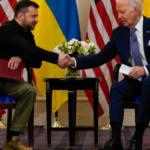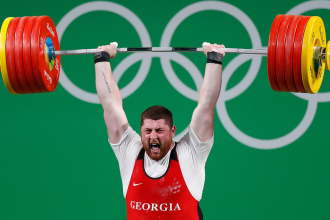In the world of professional wrestling, titles and championships are the ultimate symbols of achievement. They represent the pinnacle of success and are coveted by wrestlers, promotions, and fans alike. Among the numerous championship belts that have graced the squared circle, few have captured the hearts and imaginations of wrestling enthusiasts like the WWF Winged Eagle Title Belt.
The World Wrestling Federation (now known as WWE) introduced the Winged Eagle Title Belt in the late 1980s, and it quickly became an iconic and cherished emblem of excellence within the industry. Its design, lineage, and the champions who have held it have all contributed to its enduring legacy.
A Symbol of Excellence: Design and Legacy
The WWF Winged Eagle Title Belt, introduced in 1988, was a radical departure from its predecessors. The design, a winged eagle with outstretched wings holding, exuded an air of regal authority and magnificence. The intricate detail, craftsmanship, and attention to the belt’s aesthetics were second to none. This belt, more than any other, resembled a true championship, and it was a testament to the WWF’s commitment to presenting their champions as larger-than-life figures.
The belt’s aesthetic qualities made it a favorite among wrestling fans, but it was the wrestlers who held it that truly solidified its status as wrestling’s most beloved treasure. Legends like Hulk Hogan, “Macho Man” Randy Savage, Bret “Hitman” Hart, Shawn Michaels, and “Stone Cold” Steve Austin, to name just a few, have all proudly worn the Winged Eagle Title Belt. Their reigns as champions and the memorable moments that accompanied them are etched into wrestling history.
Hulk Hogan, one of the most iconic figures in professional wrestling, held the Winged Eagle Title Belt during his historic run in the late 1980s and early 1990s. The sight of Hogan raising the belt high above his head while “Real American” blared in the background remains an indelible image for wrestling fans of that era. His charismatic personality, unmatched popularity, and the Winged Eagle Title Belt formed an iconic triumvirate that still resonates with fans today.
Another beloved champion, Randy Savage, brought a unique charisma to the title. Savage’s flamboyant personality and dazzling in-ring style made him a standout champion. His memorable matches and promos are forever associated with the Winged Eagle Title Belt, and his reign helped elevate the belt’s stature within the wrestling community.
The excellence continued with Bret “The Hitman” Hart, whose technical prowess and in-ring storytelling set a new standard for championship reigns. Hart’s commitment to wrestling’s art form and his appreciation for the prestige of the Winged Eagle Title Belt endeared him to fans and solidified his legacy as one of the all-time greats.
The 1990s saw the rise of “The Heartbreak Kid” Shawn Michaels, whose cocky attitude and unmatched athleticism made him a perfect fit for the title. He carried the Winged Eagle Title Belt into classic encounters against the likes of Razor Ramon and Diesel, leaving an indelible mark on its history.
“Stone Cold” Steve Austin’s ascent in the late 1990s added another layer of prestige to the belt. Austin’s rebellious anti-hero persona and magnetic charisma made him one of the most popular and enduring championship belts in the title’s history. His defiant character and the Winged Eagle Title Belt were symbolic of the Attitude Era’s rebellious spirit.
The design of the Winged Eagle Title Belt has seen minor modifications over the years, but its classic version remains the most beloved among fans. Its rich history and the legends who have worn it have cemented its place as an enduring symbol of excellence and prestige in professional wrestling.
The Impact on Pop Culture
The Winged Eagle Title Belt’s impact transcended the wrestling ring and influenced pop culture in various ways. From action figures to video games, it became a recognizable and cherished symbol of professional wrestling. The belt’s striking design and association with legendary champions made it a must-have for collectors and fans worldwide.
Perhaps one of the most iconic moments featuring the Winged Eagle Title Belt in pop culture was its appearance in the hit wrestling-themed film “The Wrestler.” In this acclaimed 2008 movie, actor Mickey Rourke portrayed Randy “The Ram” Robinson, an aging and broken-down wrestler who still aspired to regain his glory days. The film showcased the belt’s significance and demonstrated how it symbolized the pursuit of dreams and redemption within the wrestling world.
Additionally, the Winged Eagle Title Belt often appears in various wrestling video games, where players can compete for it or create their own champions to hold it. These games serve as a way for fans to immerse themselves in the wrestling world and experience the thrill of holding the belt just like their favorite champions.
The Belt’s Continued Legacy
While the classic version of the Winged Eagle Title Belt is no longer used in WWE today, it remains an enduring symbol of excellence and nostalgia for fans. WWE still sells merchandise and replicas of the belt, allowing fans to own a piece of wrestling history. These replicas often find their way into conventions, fan gatherings, and even wedding ceremonies as a symbol of a couple’s shared love for wrestling.
The Winged Eagle Title Belt’s legacy also lives on through the various successors and offshoots that have taken inspiration from its design. Belts like the WWE Championship and Universal Championship still incorporate elements from the classic Winged Eagle design, paying homage to its iconic history.
In conclusion, the WWF Winged Eagle Title Belt stands as wrestling’s most beloved treasure not just because of its stunning design but also because of the legendary champions who held it and the unforgettable moments associated with it. It has left an indelible mark on the wrestling world, pop culture, and the hearts of fans worldwide. Wrestling enthusiasts continue to revere the belt and celebrate its storied history, ensuring that its legacy lives on for generations to come.














